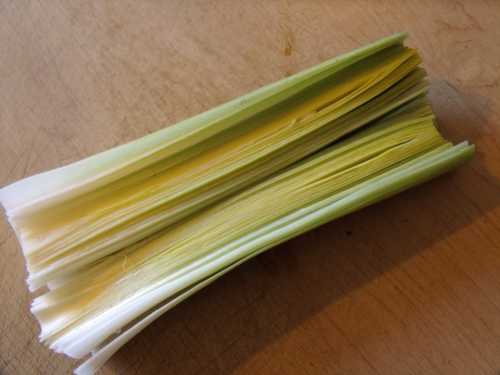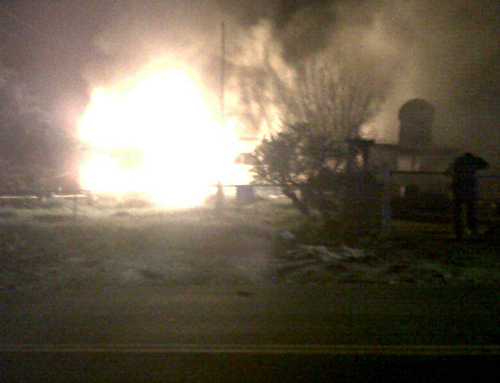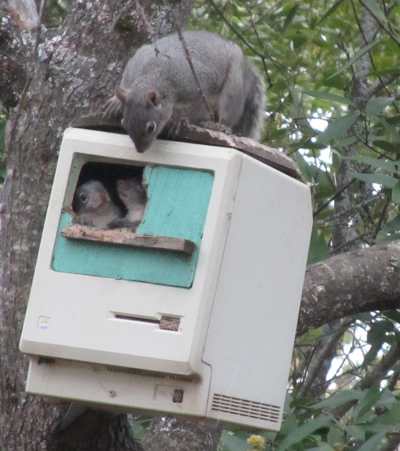
This rustic version of vichyssoise is topped with Russian-style yogurt and garnished with thyme leaves and blossoms. Photo by Esther Oertel.
Leeks may be described as the more gentile members of the onion family. They whisper their association with their strongly-flavored relatives in a subtle, refined manner.
Like onions and garlic, leeks are members of the allium family, but are quieter than their somewhat raucous cousins. You might say they’re the introverts in a very extroverted family.
The flavor common to this family of plants is gently present in the leek, its pungency tempered by a mild sweetness.
Other members of the allium family include shallots, scallions, spring onions and ramps, which are harvested in the wild and are also known as wild leeks, though the aroma and flavor is far stronger.
Asparagus is a distant cousin of the leek, residing in the same family of lily as onions. European chefs at one time called leeks “the poor man’s asparagus,” apt because leeks and asparagus may substitute for one another as side dishes since their flavors mesh well with similar foods.
Long, lanky leeks are sometimes described as looking like larger versions of one of their relatives, the scallion. It is true that scallions look a bit like leeks in miniature. Both are stalks with straight, slender white bulbs that become light green shafts, and both have a mass of darker green leaves at their tops.

Leeks are often described as looking like larger versions of their cousins, scallions. Photo by Esther Oertel.
To further the similarity, leeks may be pulled from the ground and eaten while pencil thin like scallions, though it’s rare to see them in this form. Typically they’re many times larger than their smaller cousin.
It is thought that leeks originated in Central Asia. They’ve been cultivated in that area, as well as in Europe and North Africa, for upwards of 3,000 years.
Dried leek specimens have been found in archaeological digs in Egypt, which, along with carvings and drawings, have led scientists to believe that leeks were part of the diet of the ancient Egyptians from at least 2,000 BC onwards.
Along these lines, leeks are among the foods mentioned in the Biblical book of Numbers as being missed by the Israelites after their escape from slavery in Egypt.
Leeks were prized in ancient Greece and Rome, where they were especially favored because they were thought to have beneficial effects on the throat. It is said that the Roman Emperor Nero ate leeks every day because he thought it would make his voice stronger.
Leeks were likely introduced to the United Kingdom by the Romans, where they flourished because of their ability to withstand cold weather. Their popularity is well rooted in Wales, where their image serves as part of the national emblem, a leek within a crown. Legend has it that this stems from a successful battle against the Saxons in 1620, when Welsh soldiers wore leeks in their hats to differentiate themselves from their enemies.
I find the leek a beautiful vegetable, with its thick interwoven deep green foliage and the tightly-bound accordion of paper-thin circular leaves in its light-colored shaft.

This trimmed leek stem has been cut in half lengthwise, revealing tightly-bundled leaf sheaths, a characteristic of leeks. Photo by Esther Oertel.
The light color of the stalk is created by a growing method called trenching, where soil is pushed around the shafts as they grow to blanch them. The foliage that is exposed to the sun becomes green, while the lower part of the plant underground remains tender and white.
It is this growing method that causes the leek to harbor dirt between the creases of its stalk, making it important to thoroughly clean leeks prior to using them.
Depending on how the leeks will be prepared, this can be achieved by one of two methods, either by slicing the trimmed stalk lengthwise and running water between the layers to remove dirt, or by slicing the stalk into rounds and soaking the pieces in a water-filled bowl, finishing with a good rinse.
Most recipes call for use of the white and light green portions of the stalk only, though I did find a rare recipe that called for the dark green leaves sans the lower stalk, celery-pear bisque with leeks. Typically the upper foliage isn’t used, both because of their toughness and the somewhat bitter taste. They can be used for making stock or for tying with herbs in a bouquet garni to flavor soups and stews.
One of the most common uses of leeks is in soup, though there are other interesting ways to use these gentlemen of the garden. They’re delightful in egg dishes, sautéed with potatoes or added to pasta or risotto. Mushrooms, fennel, lemon, and certain cheeses (Gruyere or goat, for example) are good matches for leeks.
Leeks also pair nicely with fish, and I found a scrumptious-sounding recipe online for white fish fillets baked with a creamy mixture of leeks and sour cream.
For something different, try oven roasting leeks with olive oil, sea salt and freshly ground pepper. Stalks should be cut in half lengthwise for this application and roasted till tender in a 400 degree oven, about 35 or 40 minutes. They can be moistened with a bit of vegetable broth from time to time to prevent drying out.
Leeks may also be braised, and are particularly delicious when braised in white wine with garlic and thyme. As with roasting, half stalks should be used. Brown them on both sides in butter before the braising liquid is added. Cover them to gently simmer on the stovetop until fork tender, about 40 minutes. A bay leaf may be added while braising for additional flavor.
Because they’re members of the allium family, leeks, though studied less, share many of the beneficial compounds and health benefits of onions and garlic.

A good rinse after soaking ensures hidden dirt is removed. Photo by Esther Oertel.
Among these are flavonoids that protect blood vessel lings from damage, the B vitamin folate which supports the cardiovascular system, and antioxidants that protect against heart disease and some forms of cancer, particularly colorectal cancer.
Some health professionals recommended consuming allium vegetables on a daily basis because of their many benefits, making leeks a valuable addition to one’s cuisine.
This week’s recipe is a new take on vichyssoise, a leek and potato soup that’s intended to be served cold, though this version may also be served warm. Leeks and potatoes are a popular combination for soup, and with changeable spring weather, I wanted to offer a recipe that would be useful for cold or warm temperatures.
Most vichyssoises are rich in saturated fat, made with butter and cream, so I rearranged the ingredients for a healthier version. Rather than butter, the leeks are sautéed in flavorful locally-made extra virgin olive oil, and the soup is finished with some mild Russian-style yogurt rather than cream.
This version of vichyssoise is rustic, with the peels of the potatoes left on for additional nutrition and fiber. It can be garnished with fresh herbs of your choice, such as parsley, tarragon, or dill, but my favorite is thyme.
We had it warm for supper the night I made it, and I had the leftovers cold for lunch the next day. Enjoy!
Esther’s “be kind to your heart” vichyssoise
6 leeks, white and light green parts only, sliced into thin rounds and thoroughly cleaned
6 cups red potatoes (about 8 medium), with some skin left on, diced
4 to 6 tablespoons extra virgin olive oil
1 quart vegetable broth
1 teaspoon sea salt
½ teaspoon freshly ground black pepper
½ cup Russian-style plain yogurt (and additional for garnish if serving cold, optional)
Fresh herbs of your choice for garnish (such as parsley, dill, tarragon or thyme)
Sauté leeks in olive oil in large soup pot until tender, about five minutes.
Add vegetable broth, potatoes, salt, and pepper and bring to a boil. Turn down heat, cover pot and simmer until potatoes are tender, about 15 to 20 minutes.
Remove from heat and allow soup to cool for a few minutes before pureeing with an immersion blender (preferred) or a food processor. (If using a food processor, you may have to process it in batches.)
Add yogurt and blend.
Serve soup warm or chill for several hours or overnight and serve cold. If serving cold, garnish with a dollop of yogurt.
Garnish warm or cold soup with chopped fresh herbs of your choice.
Makes about eight servings
Recipe by Esther Oertel.
Esther Oertel, the “Veggie Girl,” is a culinary coach and educator and is passionate about local produce. Oertel teaches culinary classes at Chic Le Chef in Hidden Valley Lake, Calif., and The Kitchen Gallery in Lakeport, Calif., and gives private cooking lessons. She welcomes your questions and comments; e-mail her at This email address is being protected from spambots. You need JavaScript enabled to view it..
Follow Lake County News on Twitter at http://twitter.com/LakeCoNews , on Facebook at http://www.facebook.com/pages/Lake-County-News/143156775604?ref=mf and on YouTube at http://www.youtube.com/user/LakeCoNews .

















